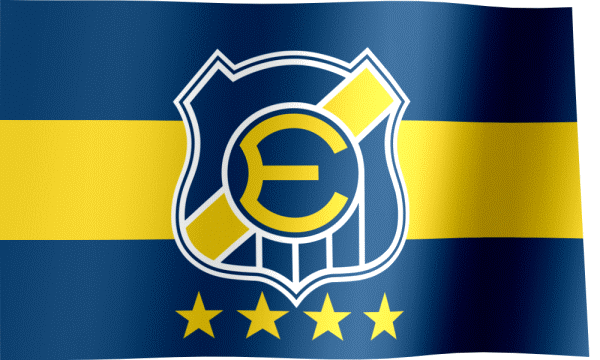Congo's Cobalt Quota Plan: The Market Responds To The Export Ban

Table of Contents
The DRC's Rationale Behind the Cobalt Quota Plan
The DRC's decision to introduce a cobalt export quota stems from a multifaceted strategy aimed at maximizing benefits from its vast cobalt reserves while addressing critical social and environmental concerns.
Increased Government Revenue and Control
The primary driver behind the quota is the DRC's desire to increase government revenue and gain greater control over its cobalt resources. This involves several key objectives:
- Strengthening domestic processing capabilities: The DRC aims to move beyond exporting raw cobalt and develop a robust domestic processing industry, adding value to its resources before export. This includes investing in refineries and other processing facilities.
- Attracting greater foreign investment on fairer terms: By controlling the export volume, the DRC hopes to attract foreign investment in a more equitable manner, ensuring that the country benefits more significantly from its mineral wealth. This necessitates improved transparency and accountability in the mining sector.
- Reducing reliance on raw material exports: The quota is part of a broader strategy to diversify the Congolese economy and reduce its dependence on exporting unprocessed raw materials. This includes promoting other sectors and industries.
Environmental Concerns and Sustainable Mining Practices
The quota system is also intended to promote environmentally sustainable cobalt mining practices. This involves:
- Implementing stricter environmental regulations: The DRC is aiming to enforce stricter regulations to minimize the environmental damage associated with cobalt extraction, such as water pollution and deforestation. This requires greater monitoring and enforcement capabilities.
- Encouraging responsible sourcing initiatives: The quota can incentivize the adoption of responsible sourcing practices throughout the cobalt supply chain, promoting transparency and traceability. This is crucial for meeting the demands of ethically conscious consumers and businesses.
- Monitoring and reducing illegal mining activities: A significant portion of cobalt production in the DRC comes from artisanal and small-scale mining (ASM), often associated with poor working conditions and environmental damage. The quota aims to better regulate and control these activities.
Addressing Social Issues and Improving Worker Rights
Improving the lives and working conditions of cobalt miners is another key motivation behind the quota. The DRC aims to:
- Improving safety standards in mines: The quota can facilitate improved safety regulations and enforcement in cobalt mines, reducing the risk of accidents and injuries. This requires investment in training and safety equipment.
- Implementing fair labor practices: The DRC seeks to eliminate child labor and ensure fair wages and working conditions for all cobalt miners. This involves collaborating with international organizations and implementing robust monitoring mechanisms.
- Supporting community development initiatives: Revenue generated from the cobalt quota is intended to be reinvested in community development programs, improving infrastructure, education, and healthcare in mining communities.
Market Reactions to the Congo Cobalt Export Quota
The announcement of the Congo cobalt export quota has created significant ripples across the global cobalt market.
Price Volatility and Uncertainty
The quota has introduced considerable price volatility and uncertainty into the cobalt market. This has led to:
- Increased demand for alternative cobalt sources: Companies are actively seeking alternative sources of cobalt to mitigate supply chain risks associated with the DRC's quota. This includes exploring cobalt deposits in other countries like Australia, Canada, and Morocco.
- Speculation on future cobalt prices: The uncertainty surrounding the quota's implementation has fueled speculation about future cobalt prices, making it difficult for businesses to plan effectively.
- Potential disruption to supply chains for electric vehicle (EV) batteries and other cobalt-dependent products: The EV industry, heavily reliant on cobalt, is particularly vulnerable to any disruption in the supply chain, potentially leading to production delays and increased costs.
Impact on the Electric Vehicle (EV) Industry
The EV industry faces considerable challenges due to the Congo cobalt export quota. This includes:
- Increased pressure on battery manufacturers to diversify sourcing: Battery manufacturers are under pressure to diversify their cobalt sourcing to reduce their reliance on the DRC. This involves establishing relationships with cobalt producers in other countries and exploring alternative battery chemistries.
- Potential delays in EV production: Supply chain disruptions could lead to delays in EV production, affecting manufacturers' ability to meet market demand.
- Rising costs for EV batteries: Reduced cobalt supply and increased demand for alternative sources could lead to higher cobalt prices and ultimately, more expensive EV batteries.
Geopolitical Implications and Diversification Strategies
The quota underscores the geopolitical risks associated with reliance on a single country for critical minerals. This has led to:
- Increased exploration and development of cobalt resources in other countries: Governments are incentivizing exploration and development of cobalt resources within their borders to reduce dependence on the DRC.
- Government incentives to support domestic cobalt production: Countries are implementing policies to support domestic cobalt production, including subsidies, tax breaks, and research funding.
- Growing interest in alternative battery technologies: The challenges presented by the Congo cobalt export quota are accelerating research and development efforts into alternative battery technologies that require less or no cobalt.
Long-Term Implications of Congo's Cobalt Quota Plan
The long-term implications of Congo's cobalt quota plan are multifaceted and depend on various factors.
The Future of Cobalt Supply Chains
The quota is likely to reshape the global cobalt market, leading to:
- Increased investment in responsible cobalt mining and processing: The quota could stimulate investments in more sustainable and ethical cobalt mining and processing practices.
- Enhanced traceability and transparency in the supply chain: Improved traceability and transparency are crucial for ensuring responsible sourcing and meeting ethical standards.
- Development of recycling technologies for cobalt: The quota could accelerate the development and adoption of cobalt recycling technologies to reduce reliance on primary mining.
Economic Development in the DRC
The success of the quota plan hinges on the DRC's capacity to effectively manage the transition and leverage the revenue for economic development. This involves:
- Investing revenue in infrastructure development: Revenue generated from the quota should be strategically invested in improving infrastructure, including transportation, energy, and communication networks.
- Supporting local businesses and entrepreneurs: The DRC needs to foster the growth of local businesses and entrepreneurs to participate in the cobalt value chain.
- Promoting diversification of the Congolese economy: Diversification is crucial to reduce the country's reliance on a single commodity and create a more resilient economy.
Conclusion
Congo's cobalt quota plan represents a significant turning point in the global cobalt market. While aiming to boost government revenue, promote sustainable mining, and address social issues, the policy has introduced significant uncertainty and volatility. The long-term consequences will depend greatly on the DRC's ability to effectively implement the quota and on the market's response to the shifting supply landscape. To stay abreast of the evolving situation and its impact on your business, continue to monitor news and analysis on Congo cobalt export quota, cobalt mining in the DRC, and related policies. Understanding this dynamic situation is vital for successfully navigating the future of cobalt supply chains.

Featured Posts
-
 Is Jimmy Butler On The Warriors Today Injury News And Game Status
May 16, 2025
Is Jimmy Butler On The Warriors Today Injury News And Game Status
May 16, 2025 -
 Analisis Del Partido Everton Vina 0 0 Coquimbo Unido
May 16, 2025
Analisis Del Partido Everton Vina 0 0 Coquimbo Unido
May 16, 2025 -
 Hyeseong Kim Zyhir Hope Evan Phillips Bobby Miller The Next Generation Of Dodgers
May 16, 2025
Hyeseong Kim Zyhir Hope Evan Phillips Bobby Miller The Next Generation Of Dodgers
May 16, 2025 -
 Menendez Brothers Resentencing New Developments In The Case
May 16, 2025
Menendez Brothers Resentencing New Developments In The Case
May 16, 2025 -
 Bvg Streik Scheitern Der Verhandlungen Nach Schlichtung Was Nun
May 16, 2025
Bvg Streik Scheitern Der Verhandlungen Nach Schlichtung Was Nun
May 16, 2025
